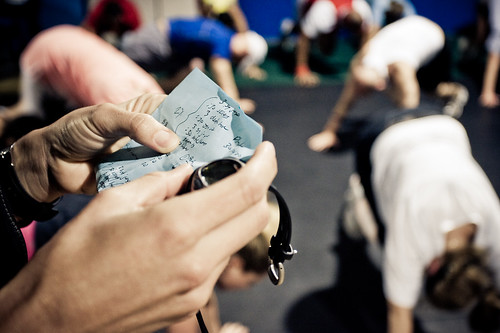cut off an ear
Just finished listening to Jeff Curto's latest podcast on project discovery and planning. I have a lot of sympathy for the approach described, but I don't think it works too well, at least not for me. I have a long academic background and an engineering bent, so I'm very used to the sorts of techniques that Jeff describes. But I've tried them when it comes to being creative and coming up with photographic projects and always find myself going nowhere. For years I tried variations of this approach, making lists, planning audiences, working out what it was all about. I'd get to the end of that process and find I didn't have anywhere to go, nothing interesting to shoot or do.
In some ways, I think these processes try to model or force something that is really an emergent property. Things happen, ideas occur, making lists or drawing audience charts isn't likely to lead you to something original or entertaining, I think it'll just lead you somewhere you've been before. Something you've seen before. I think the reality is both a lot harder and much simpler. Ideas come about all the time - the trick is to be open and paying attention to them. Write them down. Capture things that you can't help but be interested in. Don't worry about an audience. In fact, that seems like the quickest way to kill it - worrying about who wants to see it, before you even know what it looks like. Create the pictures you can't help but make. Shoot the subjects that just won't get out of your head, whether you think anyone else in the world wants to see it or not. Find a passion and follow it. That one thing that you just can't get out of your head. The most painful question to read or hear asked of an artist is 'where do your ideas come from?' The answer is almost always the same - they have no clue and they come from everywhere, all the time. I think if you have ideas, you have ideas. I've talked to people about this - some people have them all the time, others almost never. Really I think that some people are tuned in to pay attention to the ideas they do have, while others don't pay attention or don't consider them worth thinking about, or classifying as an 'idea'. Or maybe it really is a totally different way of thinking that some people have and some don't. But if you have an idea, you'll know it. You won't be able to ignore it. You'll have to photograph it.
O. Rufus Lovett had that drive, when he kept going back to Weeping Mary in Texas. My friend Karen had it when she moved from New York to a small country town for months to find out what makes it tick. You just have to find that thing that keeps tickling at the back of your head saying 'take my picture' then follow that voice. Audience be damned. If it is good enough, people will want to see it. Not because you made it for them, but because you made it for you. Passion/ obsession combined with voice or vision is what you need to find. I'm not sure that it comes on demand.
Paul will no doubt find this funny, given that he described my approach in much the same terms that I'm pointing out problems I have with Jeff's method. I suspect I'm somewhere between the two. Paul likes to see the projects that have already happened, in his previous work - the truly emergent approach. Billie describes something similar when she references David Bayles &Ted Orland's book Art & Fear and learning from the work itself. I still try to have some structure - in fact I've got most time for the idea of a mission statement for a project. But really I think it should be a mission question - what's the driving question that you are trying to explore or answer. A statement seems too final - too preconceived. The pictures already planned and storyboarded. A question, like Tharp's spine, is the thing that you can keep coming back to, to guide the project along. Maybe it isn't even visible at all in the final images - it doesn't have to hit people over the head immediately. But the question or the spine helps keep you on track. A mission statement again seems to be too defining in the direction that will be followed, the pictures that will be taken, too much pre-planning, pre-visualising, not enough response to what's in front of you.
I went to a talk by Ed Ruscha this evening. The most useful and inspiring comment was when he was asked what advice he'd give for how to be an artist, and he responded with a Max Ernst quote, along the lines of 'cut off an ear'. I think that maybe neatly sums up the whole thing. Creativity happens. Ideas happen. Art happens. It maybe isn't found in questions and charts and graphs and planning. It isn't that easy and it isn't that hard. It just is. You can look back at what worked and try to codify it, but that doesn't mean you can repeat the same steps again and end up with a similar result.
What do you think about this? Where do your projects come from?





2 comments:
Couldn't agree more, having to structure my photo sessions and planning in advance what I want to achieve with them kills some of the creativity. It has to come from the inside to feel really right, to me, that said. But, if you have a work where you have to make a living on your creative side, it's not such a bad idea structuring your work and thinking of the audience. So I'm in between too, as most are I guess.
I'm rather like you: waiting for things to hit and going out to do them. I do note down ideas as I get them, often they relate to specific times or places. But then, once I've taken the pictures, I think I'm like Paul Butzi in looking back to see what came of it.
For last year's SoFoBoMo I forced myself into going out to take particular photographs in a particular style and I found it quite difficult to do. It also meant I was working to the exclusion of seeing anything else to photograph.
Post a Comment